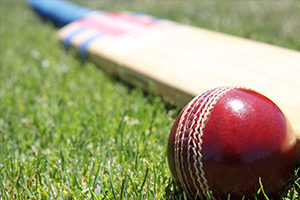 The first over of the 2019 Cricket World Cup will be bowled on Thursday 30 May as England take on South Africa at the Oval. The World Cup is part of an exciting summer of cricket in this country, with a home Ashes series to look forward to in August.
The first over of the 2019 Cricket World Cup will be bowled on Thursday 30 May as England take on South Africa at the Oval. The World Cup is part of an exciting summer of cricket in this country, with a home Ashes series to look forward to in August.
It is perhaps a foregone conclusion as to the kind of reception Aussies Steve Smith and David Warner will receive from the stands in the wake of their bans for ball tampering. One can almost see the sand paper costumes already.
However, it is the more widespread and organised threats to the sport’s integrity which are high on the agenda for the International Cricket Council (“ICC”) at the World Cup.
World Cup Anti-Corruption efforts
Corruption, namely, match-fixing, spot-fixing, bribes, and misusing inside information, is in the spotlight. Alex Marshall, the General Manager of the ICC’s Anti-Corruption Unit (“ACU”) met with teams and the press last week to discuss the ACU’s stance.
Marshall reported on a pro-active approach, which has seen the ACU making contact with a number of known “corruptors” to warn them away from the tournament. Marshall stopped short of guaranteeing a corruption-free World Cup: “You can never guarantee that any event will be free of an issue but what I can say is the corruptors know how well protected this event is.”
The ACU is embedding an anti-corruption official into every team for the duration of the World Cup. The officials will work with teams and promote compliance with the Anti-Corruption Code (“Code”). Further, players have been shown an educational video, identifying suspected corruptors and putting across the ACU’s message of “recognise, reject and report”. The ICC vow to work closely with external organisations such as the Gambling Commission, National Crime Agency and the police during the World Cup.
Corruption issues in cricket
There has been a historical issue with match-fixing and spot-fixing in cricket. One contributing factor to the problem in the sport is unregulated betting, for example the illegal sports betting markets in India.
There have been some high profile cases of corruption in cricket. The most notable is arguably the deliberate no balls bowled against England in 2010, which ultimately led to prison sentences for the three Pakistan players involved.
The issues continue – just this month, the ICC has charged two Sri Lankan players with alleged match-fixing in the UAE’s T10 league. Further, the Sri Lankan national team’s performance analyst received a two-year ban in February for bribery and obstruction of the ACU’s anti-corruption investigations.
The particular problem with corruption amongst Sri Lankan cricketers has led to the ICC running their first anti-corruption amnesty. The amnesty ran in Sri Lanka from 16-31 January 2019 and encouraged the disclosure of information on corrupt activities. The ICC agreed not to charge those individuals with an offence under the Code of failing to disclose details of any corrupt approaches to the ACU at the time.
The Code and other initiatives
The amnesty is indicative of the ICC’s proactive approach in dealing with corruption issues in the sport.
The Code itself is important in giving the ICC and national cricket boards the power and jurisdiction to tackle corrupt practices. Significantly, as explained in the Code, the national cricket federations anti-corruption rules are materially the same as the ICC’s Code. The ICC have jurisdiction for international matches and the national federations for domestic games. This approach seeks to make the expectations, offences and disciplinary process consistent across the various member countries of the ICC. An appeals process is built-in (for offences linked to international matches, to the Court of Arbitration for Sport). The sanctions for corruption offences range from 5 years to a lifetime ban from cricket. As we have seen with the 2010 ‘no balls’ case, criminal investigations and sanctions are also possible depending on the laws of the country in which the fixing took place.
In addition to the Code, the ICC has also developed the ‘Minimum Standards for Players’ & Match Officials’ Areas’ (“PMOA”). The PMOA sets out to protect players, officials and other participants from potential approaches by corruptors and unintentional disclosure of team information. It seeks to achieve this by restricting access to certain areas during international matches. Within these zones, mobile phones are not permitted, CCTV must cover access points, and security and an accreditation system must be in place.
Other anti-corruption initiatives include the Integrity App, which the ICC launched last year. The app provides those involved in cricket with information on anti-corruption and anti-doping. In tandem with the ICC’s efforts, the English Cricket Board (“ECB”) launched its own confidential corruption hotline. Crimestoppers manage the ECB’s hotline, so that any player or other participant can anonymously report information and suspicions around corruption in the sport.
Comment
The ICC and national cricket federations appear to be working well together in a joined-up effort to try to protect the integrity of the sport and deter corruption. Undoubtedly though, there is a lot of work still to do in preventing those outside of cricket, the organised ring-leaders to whom the Code does not apply, from seeking to corrupt players and make illegal gains.
Match-fixing, spot-fixing and similar betting-related offences are notoriously difficult to evidence. More intelligence sharing between cricket federations and government agencies, betting companies and other external organisations will be crucial in the long-term. In the short-term, let’s hope that the 2019 Cricket World Cup will be free from corruption.

